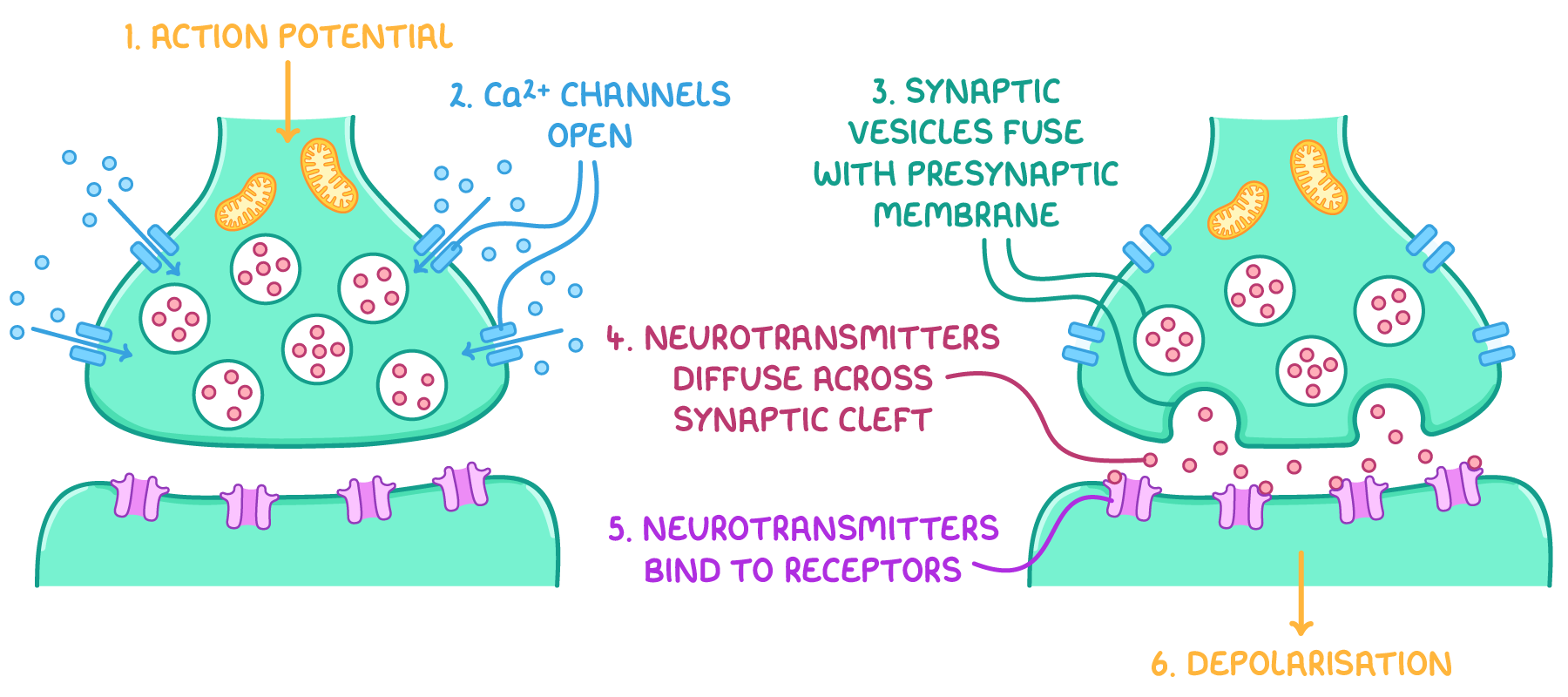Mechanism of Synaptic Transmission
This lesson covers:
- The steps involved in synaptic transmission
- Cholinergic synapses and the role of acetylcholine
The steps involved in synaptic transmission
Synaptic transmission is the process by which a nerve impulse is transmitted from one neurone to another across a synapse. This process is essential for communication within the nervous system.

Key steps in synaptic transmission:
- An action potential arrives at the presynaptic knob.
- This causes voltage-gated calcium ion (Ca2+) channels to open and Ca2+ flows into the presynaptic knob.
- This causes synaptic vesicles, which contain neurotransmitters, to move towards and fuse with the presynaptic membrane, with the help of SNARE proteins.
- The vesicles release neurotransmitters into the synaptic cleft through exocytosis, and the neurotransmitters rapidly diffuse across the synaptic cleft.
- On reaching the other side, the neurotransmitters bind to receptor proteins called ligand-gated ion channels on the postsynaptic membrane.
- This binding leads to the depolarisation of the postsynaptic membrane by opening ligand-gated ion channels, allowing specific ions, like sodium ions, to pass through the membrane.
- If this depolarisation reaches a threshold level, an action potential is triggered in the postsynaptic neurone.
- Ligand-gated ion channels close after neurotransmitter binding to prevent continuous depolarisation of the postsynaptic neurone, ensuring that the response is not permanent.
Cholinergic synapses and the role of acetylcholine
Cholinergic synapses are specific types of synapses that use acetylcholine (ACh) as their neurotransmitter.
After ACh binds to receptors and triggers a response:
- ACh is broken down by the enzyme acetylcholinesterase into choline and ethanoic acid (acetate).
- These breakdown products are then reabsorbed into the presynaptic knob via active transport.
- Choline then reacts with acetyl coenzyme A to reform ACh.
- Ach is transported into synaptic vesicles, ready for another action potential.